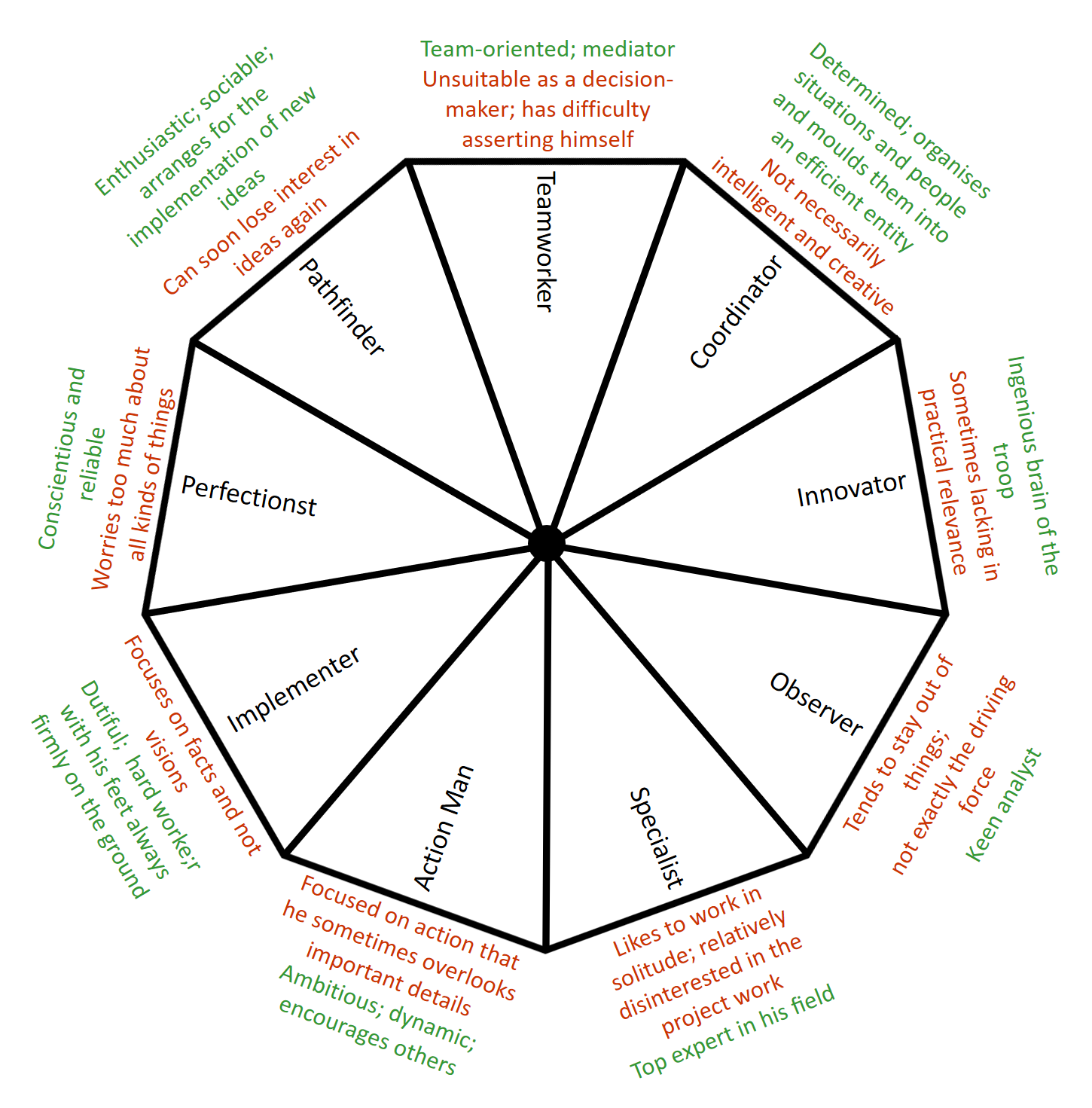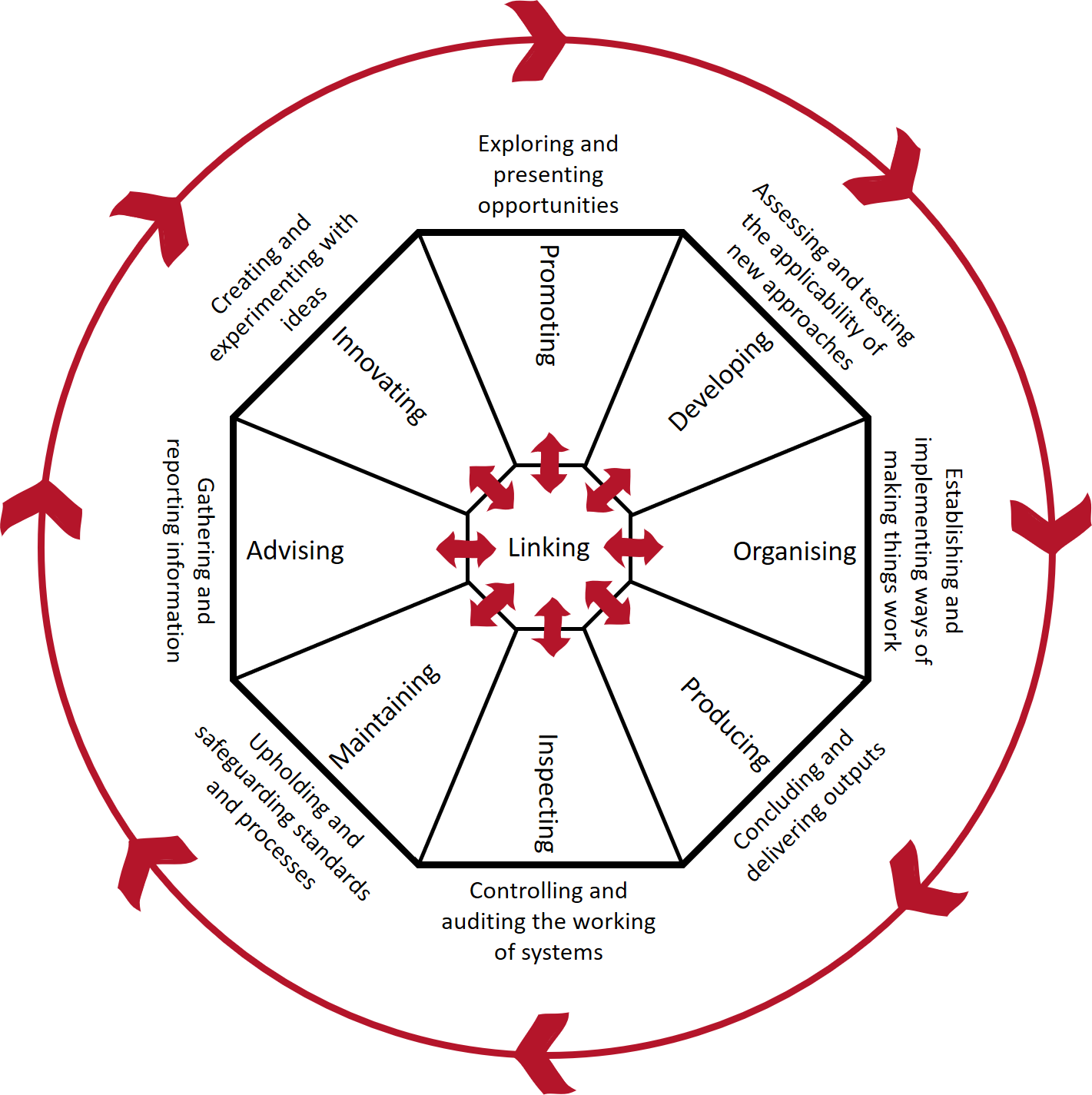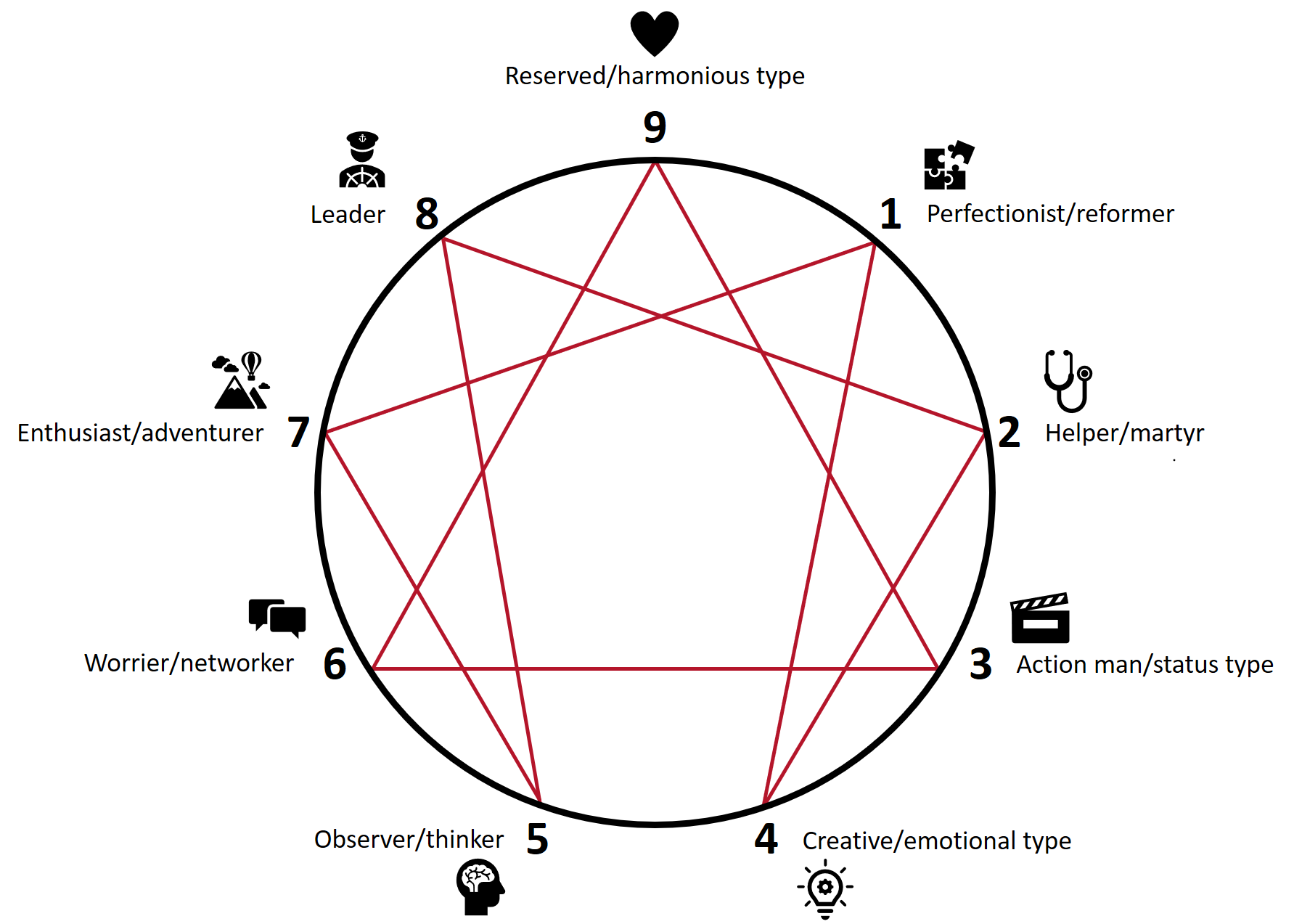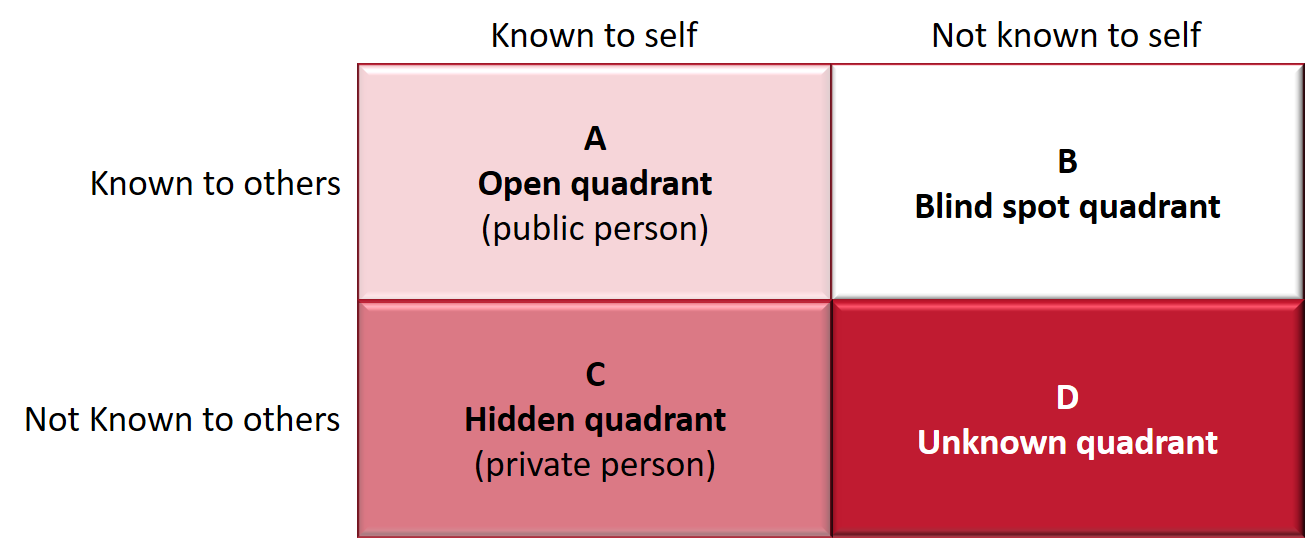Chapter 20 - Softskills¶
1. Team Building¶
Project management personnel should have some special personal skills and traits. Although they basically apply to all project team members, they particularly relate to the project manager, i.e. you who acts as a role model for his staff based on his personal conduct. Following skills are useful:
- Ability to communicate
- Initiative, engagement, enthusiasm, ability to motivate
- Ability to come into contact, openness
- Sensitivity, self-control, ability to value appreciation, readiness for responsibility, personal integrity
- Conflict solving, argumentation culture, fairness
- Ability to find solutions, holistic thinking
- Loyalty, solidarity, readiness to help
- Leadership abilities
Determining personnel requirements¶
A project's success depends to a great extent on the choice of its team members. First of all, the personnel required need to be planned. To do so there are two different ways - the quantitative and the qualitative personnel requirement planning.
When calculating personnel requirements, the department responsible for project personnel determines how many staff is required (quantitative requirements) and which type of staff is necessary (qualitative requirements) to keep the project operational. A personnel requirements analysis is made to check the variance between available and required personnel. When deviations occur, compensatory measures are defined and implemented. In addition to personnel requirements which do not make allowances for staff absences (e.g. due to holiday or illness), the personnel requirements plan must include the necessary resources (e.g. for coverage or replacement of absent staff).
Quantitative personnel requirements¶
When establishing quantitative personnel requirements, the following aspects should be taken into consideration:
- Number of staff needed
- Dates when they are required
- Length of assignment
- Place of assignment
You can derive this information from the work breakdown structure, time schedule and resource breakdown structure.
Qualitative personnel requirements¶
To ascertain qualitative personnel requirements, it is necessary to clarify two things:
- Work to be performed, with detailed specifications (= target)
- Existing staff and their qualifications (= actual)
You can derive this information from the work package descriptions requirements profiles, personnel development plans and from job descriptions.
Selection of the project team¶
As soon as it has been clarified how much personnel, respectively which qualifications are needed it can be proceeded with the selection process. This selection generally takes place under difficult circumstances, since projects in which the project manager has the authority to select his own team members are very rare. In many cases, a project manager has to accept staff not required urgently by line managers.
The selection of project personnel is not based on an individual's availability or status within the standard management structures, but on the four areas of technical, methodological, organisational and social competence. Competent members of staff who merely lack project management skills can be trained up in a relatively short period of time so that they are capable of understanding and applying project management terms and methods.
Social competence¶
The ability of a team to function efficiently not only depends on professional qualifications and project management skills, but also to a great extent on the social competence of its team members. Social competence can be broken down into a series of individual components:
- Empathy
- Willingness to switch roles (e.g. to perform less prestigious tasks as well)
- Ability to reach consensus
- Ability to resolve conflicts
- Support for team members who don't fit in
- Concern for group learning (a joint learning process and willingness to share knowledge)
Recommended procedures for team building¶
Various approaches to building project teams are outlined in this section.
Belbin's model¶
Belbin's role model is based on the idea that the different personality traits, knowledge and skills of the individual team members complement each other. Ideally, each team's members fill nine roles, for which different terms may be used in practice. Most people can perform two or three team roles effectively and fill two further roles if no other team member is available.

Team Management System¶
Margerison & McCann's Team Management System (TMS) is based on their research into the characteristics of successful teams and is another method of personnel, team and organisation development. TMS presupposes that nine team performance factors are associated with high-performing teams.

The TMS principle works better in heterogeneous teams. Depending on what the team has to do, specific functions (or the staff who perform these functions) are accorded a greater or lesser weighting in the team building process. The 'linking' function is the team's hub, the systemic head office of the team. Generally, the project manager performs this function. In more mature teams, the team members sometimes also assume some responsibility for linking. Even if the team only lacks one of the above functions or the function is not performed effectively, efficiency is reduced. According to the TMS principle, the wheel doesn't turn smoothly because a part is missing or damaged.
Enneagram¶
The Enneagram is a personality model, with whose help people can assign themselves to one of nine different personality types. The lines in the symbol indicate how people's behaviour can change under stress or flow conditions. Some people have a positive and encouraging effect, others a negative effect, on other people. The Enneagram's structure delivers explanations for team development issues, such as recurring conflicts between particular people. The personality types, for which different names are used in practice, can be described as follows:

Högl's recommendations for teamwork¶
In two case studies, Högl identified five factors that have a dominant influence on teamwork: social competence, methodical competence, preference for teamwork, relative team size and heterogeneity of the team members' knowledge and skills.
He recommends:
- Pay attention to social competence
- Ensure methodical competence
- Ensure that team members have an aptitude for teamwork
- Ensure that the size of the team is appropriate for the project
- Avoid major differences in the knowledge and skill levels of team members
The individual characteristics and traits of team members and their differences (= heterogeneity), can have a strong impact on teamwork. These include technical jargon, local organisational cultures (e.g. of a department), professional understanding (e.g. sales vs. development), gender, age, formal qualifications, knowledge and skills, personal values and opinions, socio-economic status and personality.
Team development process¶
Johari window¶
In order to guide team development, you should assess the team at the outset of the project. The Johari window offers useful support for this because it helps you to visualise the different stages of team development. It shows team members' different perceptions of each other. As a team develops, some perceptions grow and others fade. In the Johari model, these developments are represented by the relevant quadrant becoming either larger or smaller.

Quadrant A
Shows the extent to which the behaviour and motives of a team member are known to the person himself and to the other members of the team.
A team member is afraid of making mistakes. Both he and the team are aware of this. The other team members attempt to help him to overcome this fear by being sensitive to it.
Quadrant B
Shows the extent to which a team member is not aware of his behaviour and motives, even though the other members of the team are.
A team member regularly interrupts other people in discussions. As a result, the other team members would prefer for him to be excluded from meetings. The person in question is aware that something is wrong, but he doesn't know what.
Quadrant C
Shows the extent to which a team member wishes to hide his behaviour and motives from the other team members.
A team member finds it difficult to speak a foreign language. He makes various excuses to ensure that other members of the team are assigned to tasks which involve speaking this foreign language. He is even willing to let his colleagues think he is lazy if it means that he doesn't have to speak the foreign language.
Quadrant D
Shows the behaviour and motives of which neither the team member nor the other team members are aware.
A team member responds to criticism with stomach problems. However, neither he nor the other team members are aware of the link between the two.
In the process of team development, your objective is to enlarge quadrant A and to shrink quadrants B and C. Shrinking quadrant D is a difficult task for the both you and the team. In this case, an external expert may be able to help by identifying subconscious behaviour and motives.
Phases of team development¶
Five-phase model¶
Tuckman's team development theory (= team clock), differentiates between five phases:
| Phase | Abbreviation | Definition |
|---|---|---|
| Orientation phase | = forming | People join the team with different expectations They sound each other out, routine work is performed and tasks are allocated They still feel relatively comfortable and are friendly and polite to each other |
| Power struggle phase | = storming | Here it's all about how to work together First frictions occur and team members will sometimes be dissatisfied with the way the team is managed Conflicts brew |
| Organisational phase | = norming | Conflicts come to a head The more obstacles are eliminated and conflicts solved, the greater the subsequent team cohesion Roles are clearly established and team members agree upon rules |
| Achievement phase | = performing | Reaching this phase is not easy and should not be taken for granted Team as a whole will outperform its individual members Strong sense of team identity will have developed Team members will support each other Achieving the team objective will be the highest priority |
| Dissolution phase | = adjourning | Team is dissolved Its members leave their tasks, roles, responsibilities and the other team members behind |
Keep in mind that whenever changes take place (e.g. new team members, changed tasks), the whole process starts again with the first phase (orientation phase). It is therefore a good idea to keep fluctuation to a minimum. High-performing teams soon return to a previously achieved performance level.
Special aspects of the start-up phase¶
Your managerial skills are especially important in the start-up phase. Your task is to initiate the team-building process and to ensure that
- team members can identify with their project responsibilities,
- they are familiar with and accept the project objectives,
- latent conflicts are brought out into the open and are discussed and
- a positive project culture is created.
In the start-up phase every single project team member needs to be especially creative (e.g. for the definition of project objectives). You are best advised to use a cooperative management style in this phase, i.e. the team members should have the opportunity to contribute knowledge and be involved in decision-making.
During this phase, you are responsible for establishing communication channels with line managers and with the customer to enable proactive stakeholder management. The regular provision of information via formal reporting channels and at status meetings is very important. You should establish a solid basis for efficient informal communication structures. For example, you can set up your workplace close to the workplaces of other team members or organise team activities.
Team building measures¶
When building project teams, both formal measures (e.g. start-up meetings, workshops, personnel selection and training of team members) and informal measures (e.g. promotion and support of teamwork, individual motivation and social events) come into play. It is your task to mould the team members into a cohesive entity.
To do this, you have to
- define togeher with your team the working rules for the duration of your collaboration,
- ensure that all team members have the same understanding of the project charter and objectives,
- assign responsibilities clearly,
- ensure that all team members back important decisions through explaining to, convincing and communicating between the holders of different opinions,
- ensure that all team members receive the same information,
- create the basis for transparent communication structures,
- provide the team with regular feedback on its performance and development, relating to both work and interpersonal relationships in the team,
- identify conflicts as soon as possible and find constructive solutions and
- foster constructive arguments in which all participants can state their concerns without fear of reprisals from the team.
Teamwork rules¶
The following rules apply to all team members:
- All observe the basic communication rules.
- Team members should provide feedback (especially criticisms) so that the person affected has the opportunity and is motivated to modify his behaviour.
- Each individual should regularly inform the other team members about what they are currently working on, the objective of this activity and any possible problems.
- All team members should observe the meeting rules.
- The team members should provide each other with information so that they can optimise their work and no one feels left out.
- All team members share responsibility for decisions that are made in accordance with the decision-making process agreed upon by the team.
- Conflicts and potential conflicts should be discussed openly and the entire team should then develop a solution.
- Every member of the team should respect and try to support team colleagues.
- Everyone takes it in turns to perform unpopular tasks.
Summary¶
To summarise the keywords of that chapter, here is a quick overview:
| Technical term | Definition |
|---|---|
| Personnel requirement planning | Quantitative and qualitative personnel requirement planning Quantitative: How many personnel? Qualitative: Which type of personnel? |
| Johari window | Four quadrants of self- and external perception Quadrant A: Open quadrant Quadrant B: Blind spot quadrant Quadrant C: Hidden quadrant Quadrant D: Unknown quadrant |
| Tuckman's team development | 1. Phase: Forming 2. Phase: Storming 3. Phase: Norming 4. Phase: Performing 5. Phase: Adjourning |
Test yourself!¶
Now it is time to check your knowledge.
Answer the following questions for yourself. Please take your time and think carefully about what you would answer before revealing the solution.
How are personnel requirements ascertained and how is a project personnel requirements plan prepared?
Ascertainment of personnel requirements:
Pure quantity or quality-based assessment without consideration to possible absences.
Quantitative:
Necessary number, date, duration and place e.g. based on WBS, time schedule and resource breakdown structure.
Qualitative:
Work to be performed, with detailed specifications (= target) Existing staff and their qualifications (= actual), e.g. derived from WP descriptions, requirements profiles, personnel development plans or job descriptions.
Personnel requirements planning:
Overview with matrix. Which functions are associated with which requirements? The number of necessary and/or available members of staff in the relevant department is entered in the table.
What essential behavioural traits can a project manager be assumed to have?
- Communication skills
- Initiative, commitment, enthusiasm, motivation
- Interpersonal skills, openness, sensitivity, self-control, ability to show appreciation
- Responsibility, personal integrity
- Ability to manage conflicts, argue constructively and show fairness
- Ability to solve problems, holistic thinking
- Loyalty, solidarity, cooperativeness
- Management skills
What are the important considerations when building teams?
The four competence pillars of technical, methodical, organisational and social competence.
On what principle is the Johari window based and how is it used?
It visualises various development stages. It shows the different perceptions that team members have of each other. During the team development process, some perceptions become stronger and others weaker (perceptions of each other, known/not known to others, known/not known to self).
Which special tasks should the project manager perform in the start-up phase?
Commence the team building process and ensure
- that team members can identify with their project responsibilities,
- that they are familiar with and accept the project objectives,
- that latent conflicts are brought out into the open and discussed and
- that a positive project culture is created.
Which phases of development (according to Tuckman) does a team normally go through?
- Forming
- Storming
- Norming
- Performing
- Adjourning
Which team building measures should the project manager implement?
- Define the rules for the duration of the team project in conjunction with his team.
- Ensure that all members of the team understand the project charter and objectives and that they have the same understanding of both these things.
- Define clear responsibilities.
- Ensure that all team members contribute to important decisions by way of explaining to, convincing and communicating between the various opinion holders.
- Ensure that all team members receive the same information.
- Create an environment that fosters open communication.
- Provide the team with regular feedback on its performance and development, relating to both work and interpersonal relationships in the team.
- Identify conflicts as soon as possible and find constructive solutions.
- Foster constructive arguments in which all participants can state their concerns without fear of reprisals from the team.
Which rules relating to cooperation should be agreed by the project team members?
- Observe the basic rules of communication.
- Team members should provide feedback (especially criticisms) so that the person affected has the opportunity and is motivated to modify his behaviour.
- Each individual should regularly inform the other team members about what they are currently working on, the objectives of this activity and any possible problems.
- All team members should observe meeting rules.
- Team members should provide information to each other so that they can optimise their work and none will feel left out.
- Make joint decisions.
- Conflicts should be openly discussed and all team members should be involved in finding a solution.
- Show respect to others.
- Everyone should take turns in performing less popular activities.